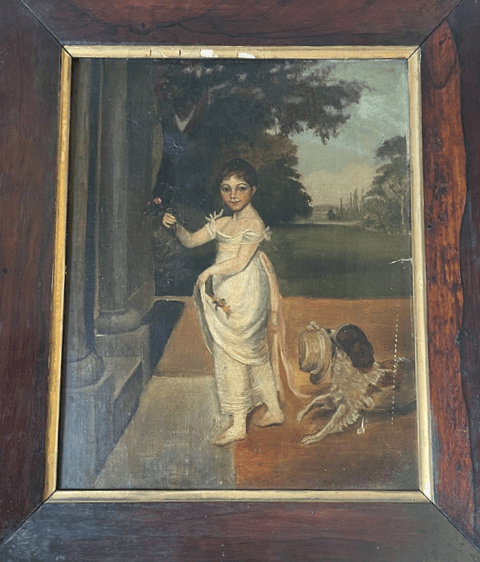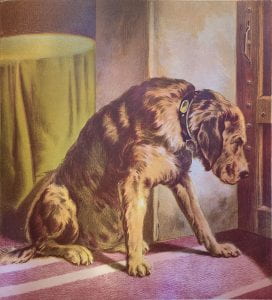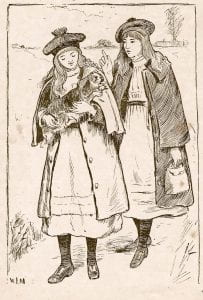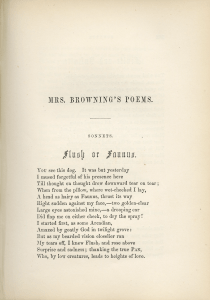by Rachel Jacob, Armstrong Browning Library Graduate Research Assistant
As the Armstrong Browning Library continues to build the largest collection of Robert and Elizabeth Barrett Browning works, it is also building its collection of academic works about the Brownings and the long nineteenth century. Below are the Armstrong Browning Library’s newly acquired works courtesy of the Baylor Book Society, some of which can be seen on display in the Easter Day Alcove which connects the Entrance Foyer to the Leddy-Jones Research Hall.
The Baylor Book Society, established in 1970 as the Moody Memorial Library Book Fund, provides a way for donors to strengthen the book purchases of Baylor Libraries and create a lasting tribute. The contribution of an individual or group creates a legacy as the Libraries place a special plate with the name of the donor and the honoree in the first volume which the funds help acquire.
In memory of Hannah McKay Crofts by Frances McKay Andrews and Ellen Andrews Gage.
Beverly Seaton’s The Language of Flowers: A History. [ABL Non-Rare 398.368 S441l 1995]

In memory of Jean Withers McIver by Martha A. and Roger L. Brooks.
Tessa Bridal’s Effective Exhibit Interpretation and Design. [ABL Non-Rare 069.4 B851e 2013]
In memory of Dr. Cornelia Marschall Smith by Martha and Roger Brooks.
The Letters of Henry Wadsworth Longfellow, Volume V: 1866-1874. [ABL Non-Rare]
In honor of Joy and Herbert H. Reynolds by Martha and Roger Brooks.
The Letters of Henry Wadsworth Longfellow, Volume VI: 1875-1882. [ABL Non-Rare]
In memory of Etta and Robert Withers by Martha Withers Brooks.
Catherine Addison’s A Genealogy of the Verse Novel. [ABL Non-Rare 821.009 A225g 2017]
In loving memory of My Parents Mr. and Mrs. Ben Skrabanek by Rita S. Patteson.
Fiona Samson’s Two-Way Mirror: The Life of Elizabeth Barrett Browning. [ABL Non-Rare 821.82 B S192t 2021b]

In honor of Jeanne Wood Nowlin by Kay and Mike Brown.
Elizabeth Ludlow’s The Figure of Christ in the Long Nineteenth Century. [ABL Non-Rare 809.93351 L945f 2020]
By Charlotte and Robert Lloyd.
Fiona Samson’s Two-Way Mirror: The Life of Elizabeth Barrett Browning. [ABL Non-Rare 821.82 B S192t 2021b]
In honor of Dr. Rynell Stiff Novak by Joseph R. Novak.
Fiona Samson’s Two-Way Mirror: The Life of Elizabeth Barrett Browning. [ABL Non-Rare 821.82 B S192t 2021b]
In honor of Rebekah Novak Proctor by Her Parents Rynell and Joseph Novak.
Heather Bozant Witcher and Amy Kahrmann Huseby’s Defining Pre-Raphaelite Poetics. [ABL Non-Rare 820.9008 W819d 2020]
In memory of Celia Dilworth Morgan, Class of 1938, by Nancy and Phil Wedemeyer.
Isobel Armstrong’s Victorian Poetry: Poetry Poetics and Politics. [ABL Non-Rare 821.809 A735v 2019]
In honor of the Anna and Bob Wright Family by Mike and Kay Brown.
Clare Pettitt’s Serial Forms: The Unfinished Project of Modernity, 1815-1848. [ABL Non-Rare 070.5 P511s 2020]

In memory of Rev. Al Novak, 1929, by Rynell and Joseph Novak.
Krista Lysack’s Chronometres: Devotional Literature, Duration, and Victorian Reading. [ABL Non-Rare 028.9 L993c 2019]
In honor of Joseph R. Novak, BU 1951, by Dr. Rynell S. Novak.
Karen Swann’s Lives of the Dead Poets: Keats, Shelley, Coleridge. [ABL Non-Rare 821.709 S972l 2019]
In memory of Dr. Margaret Jones Chanin by Gretchen Peterson Thomas.
Fiona Samson’s Two-Way Mirror: The Life of Elizabeth Barrett Browning. [ABL Non-Rare 821.82 B S192t 2021b]
In memory of Celia Dilworth Morgan, Class of 1938, by Nancy and Phil Wedemeyer.
John H. Falk and Lynn D. Dierking’s Learning from Museums. [ABL Non-Rare 069.1 F191l 2018]
In memory of Dorothy Cunningham Lamberth by many Tyler friends who love her.
Sarah Glendon Lyons’ Algernon Swinburne and Walter Pater: Victorian Aestheticism, Doubt and Secularisation. [ABL Non-Rare 820.9008 L991a 2015]
In memory of Jesmarie Harvey Hurst by libraries board of advisors and library staff.
Joseph Crawford’s Inspiration and Insanity in British Poetry: 1825-1855. [ABL Non-Rare 821.709 C899i 2019]

In memory of Jesmarie Harvey Hurst by loving Tyler friends.
Philipp Erchinger’s Artful Experiments: Ways of Knowing in Victorian Literature and Science. [ABL Non-Rare 820.9356 E65a 2018]
In memory of Jesmarie Harvey Hurst by Martha and John Minton.
John Blades’ Robert Browning: The Poems. [ABL Non-Rare 821.83 D B632r 2018]
In loving memory of Ann Miller, an outstanding English professor, from her friends Nancy and Fred Logan.
Elise Partridge’s The Exiles’ Gallery. [ABL Non-Rare 811.6 P275ex 2015]
In honor of Mary Barton Robinson, BA 1950, by Kathy Robinson Hillman.
Jessica L. Lacher-Feldman’s Exhibits in Archives and Special Collections Libraries. [ABL Non-Rare 021.7 L137e 2013]
In honor of my parents, Mr. and Mrs. William F. Schuetz, by Melvin H. Schuetz.
Michael Wheeler’s The Athenaeum: More Than Just a London Club. [ABL Non-Rare 367 W563a 2020]

In honor of my wife, Carol L. Schuetz, by Melvin H. Schuetz.
Fiona Sampson’s In Search of Mary Shelley: The Girl Who Wrote Frankenstein. [ABL Non-Rare B S544s 2018]
In honor of Connie Schuetz Wright by Melvin H. Schuetz
Silvio Bar and Emily Hauser’s Reading Poetry, Writing Genre: English Poetry and Literary Criticism in Dialogue with Classical Scholarship. [ABL Non-Rare 821.009 B223r 2019]
In honor of our granddaughter Natalie Grace Belew for her character, diligence, and dedication, from her grandparents Ruth and John Belew.
Melisa Klimaszewski’s Collaborative Dickens: Authorship and Victorian Christmas Periodicals. [ABL Non-Rare 823.8 K65c 2019]
In memory of Carroll Hague.
Ben Glaser and Jonathan Culler’s Critical Rhythm: The Poetics of a Literary Life Form. [ABL Non-Rare 808.1 G548c 2019]
In honor of Frankie Carson by Melvin H. Schuetz.
Ana Sampson’s Night Feeds and Morning Songs: Honest, Fierce and Beautiful Poems about Motherhood. [ABL Non-Rare 808.81 S192n 2021]

In honor of Sue and Wilburn “Dub” Wright by George W. Monroe.
Paul E. Kerry’s Thomas Carlyle and the Idea of Influence. [ABL Non-Rare 828.809 K41t 2018]
In honor of William F. Schuetz, Jr. by Melvin H. Schuetz.
Daniel Karlin’s Street Songs: Writers and Urban Songs and Cries, 1800-1925. [ABL Non-Rare 821.009 K18st 2018]
In memory of Louise H. Schuetz by Melvin H. Schuetz.
Albert D. Pionke’s Teaching Later British Literature: A Thematic Approach. [ABL Non-Rare 820.7 P662t 2019]
In honor of Lumae Cunningham and Roger Spurgeon Brooks by Roger Leon Brooks.
Britta Martens’ The Poetry of Robert Browning. [ABL Non-Rare 821.83 D M377p 2016]
In honor of Lynn Schuetz by Melvin H. Schuetz.
Shane McCorristine’s Spectres of the Self: Thinking about Ghosts and Ghost-Seeing in England, 1750-1920. [ABL Non-Rare 133.1 M191s 2010]
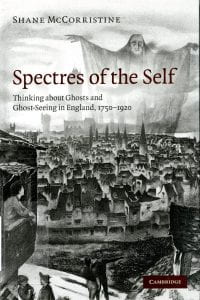
In memory of Dr. Susan Burrow Colón by Ivy, Greg, and Luke Hamerly.
Andrew Hodgson’s The Poetry of Clare, Hopkins, Thomas, and Gurney: Lyric Individualism. [ABL Non-Rare 821.809 H691p 2019]
In memory of my father, William F. Schuetz, by Melvin H. Schuetz.
David Kerler and Timo Muller’s Poem Unlimited: New Perspectives on Poetry and Genre. [ABL Non-Rare 808.1 K39p 2019]
In honor of Shirley Schuetz by Melvin H. Schuetz.
Brian Rejack and Michael Theune’s Keats’s Negative Capability: New Origins and Afterlives. [ABL Non-Rare]
In honor of my wife, Carol L. Schuetz by Melvin H. Schuetz.
Kevin Klipfel and Dani Cook’s Learner-Centered Pedagogy: Principles and Practices. [ABL Non-Rare 025.56 K65l 2017]
More information about the Baylor Book Society and other Baylor Library programs can be found at:
https://www.baylor.edu/mediacommunications/news.php?action=story&story=1671
https://www.baylor.edu/library/index.php?id=975620
https://www.baylor.edu/library/index.php?id=975621

























